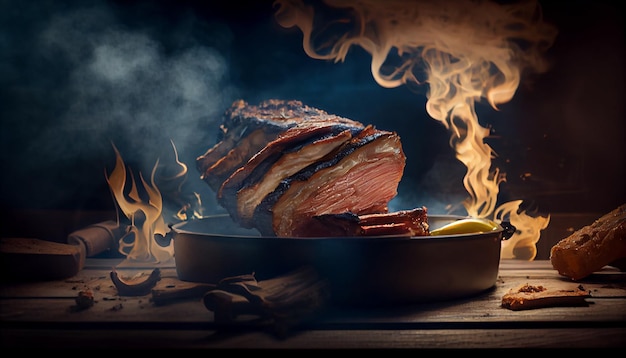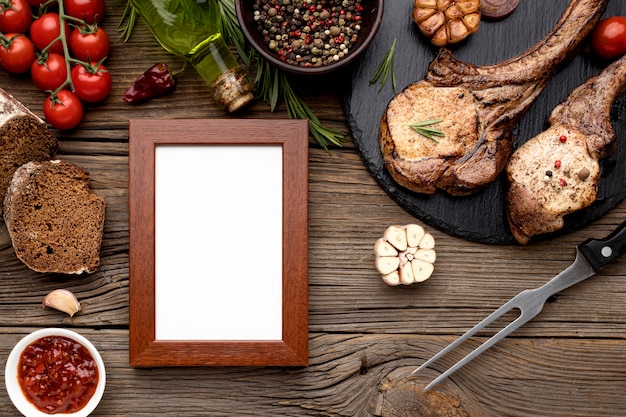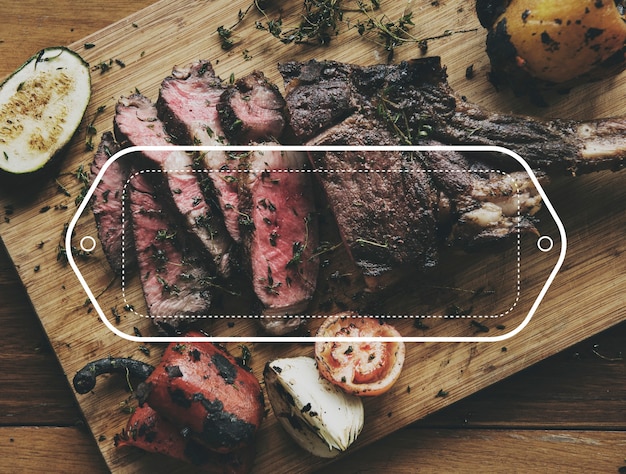Let’s be honest, there’s something about brisket that just gets you going. Maybe it’s the slow-cooked magic, the smoky aroma that fills your kitchen, or the sheer satisfaction of carving into that melt-in-your-mouth goodness. It's a journey, no doubt, but the reward is truly worth it. I've been tackling brisket for years, and I'm here to share my secrets, the little tricks I've learned, and some of my favourite recipes. So, grab your favourite beverage, settle in, and let's dive into the world of brisket together.
Part 1: Understanding Brisket - A Cut Above the Rest

Brisket is a unique cut of beef, and understanding its quirks is essential to mastering the art of cooking it. It’s tough, fibrous, and packed with collagen. This combination is what makes brisket so challenging, but also what gives it the potential to be unbelievably tender and flavorful.
The Anatomy of Brisket - Point and Flat
First, let’s break down the brisket itself. It comes from the lower chest of the cow, and it’s composed of two distinct muscles – the point and the flat. The point, which is the thick, fatty part, is known for its rich flavour and incredible tenderness. The flat, on the other hand, is leaner and more uniform. It’s often preferred for slicing as it holds its shape better. You can cook them separately or together, but both offer a unique taste and texture.
The Science of brisket cooking - Transforming Toughness into Tenderness
Now, why does brisket require low and slow cooking? It all comes down to that collagen. As the brisket cooks slowly, the collagen breaks down into gelatin. This magical transformation is what makes brisket so melt-in-your-mouth. It adds moisture, tenderness, and a rich, almost unctuous texture. It's a lesson in patience, a slow dance between heat and time, resulting in a culinary masterpiece.
Choosing the Right Brisket - The Perfect Cut for Your culinary adventure
At the butcher counter, you'll be presented with a variety of briskets. Here’s how to choose the perfect one: Look for good marbling, those beautiful streaks of fat that run throughout the meat. It's the fat that renders down, adding moisture and incredible depth of flavor to your brisket. You'll also see a layer of fat on top, often called the "fat cap". Don't be tempted to trim it all away - you need that fat! I usually leave about a quarter-inch of fat on the brisket.
Part 2: The Tools of the Trade - Equipping Yourself for Success

You don't need a fancy kitchen to make a great brisket, but there are a few essential tools that will make your life easier. These are the things I wouldn't attempt brisket without.
The Smoker - The Heart of Brisket Cooking
Brisket, as you might know, is best cooked on a smoker. The low and slow environment of a smoker is crucial for breaking down collagen and developing that deep, smoky flavor that makes brisket so irresistible. There are a few different types of smokers: offset, pellet, and even charcoal grills with smoker boxes. It's a matter of personal preference, but the goal is the same: to create that smoky, slow-cooked magic.
The meat thermometer - Your Guide to perfect brisket
Don't rely on your eyes alone when it comes to judging the doneness of brisket. You need a meat thermometer to ensure it's cooked to the right temperature. I swear by a digital probe thermometer, as it allows you to monitor the internal temperature of the brisket throughout the cooking process. This is essential to prevent over-cooking and ensure a beautifully tender outcome.
The Butcher Paper - Your Secret Weapon for Moistness
Butcher paper is a simple yet genius tool for brisket cooking. When you wrap your brisket in butcher paper during the final stages of cooking, you create a moist environment that helps it cook evenly and prevents it from drying out. This is crucial for that melt-in-your-mouth texture and ensures all those beautiful juices are locked in.
Part 3: Preparing the Brisket - Setting the Stage for Success

You've got your tools, now let's get ready for the real work. The way you prep your brisket plays a huge role in the final outcome. It's all about taking those initial steps to ensure a delicious end result.
Trimming the Fat - Balancing Fat and Flavor
The first step is trimming the excess fat. This isn't about removing all the fat, just the excess. As I mentioned before, I usually leave about a quarter-inch of fat on the brisket. This is a delicate balance, ensuring enough fat to render down for moisture and flavor, while still allowing for a clean and even cook.
Seasoning the Brisket - A Symphony of Flavors
Here's where you can get creative! Seasoning brisket is all about personal preference. A simple salt and pepper rub is a classic, but I like to experiment with different combinations. Garlic powder, onion powder, paprika, chili powder, even a touch of coffee grounds - the possibilities are endless. The key is to apply the rub generously to all sides of the brisket, making sure to get into those crevices and cracks.
The Importance of Resting - Allowing the Brisket to Relax
Before you throw your brisket on the smoker, let it rest at room temperature for about 30 minutes. This allows it to come to room temperature, ensuring a more even cook and preventing temperature shock. It's a simple step that can make a big difference in the final outcome.
Part 4: Cooking the Brisket - The Magic Begins
Now, the fun part - it's time to fire up the smoker and get cooking! This is where the real magic happens, a slow dance between heat, smoke, and time.
Setting the Stage - Prepping for a Long Cook
Preheat your smoker to 225 degrees Fahrenheit (107 degrees Celsius). If you're using an offset smoker, keep a watchful eye on the temperature. You may need to add more wood chips or charcoal throughout the cooking process to maintain that consistent low and slow heat.
The Initial Cook - Breaking Down the Collagen
Place your brisket fat side up on the smoker. Let it cook for about 4-5 hours, or until the internal temperature reaches 160 degrees Fahrenheit (71 degrees Celsius). This is the "stall" stage, where the brisket’s temperature plateaus. Don't panic! This is normal and part of the process. It’s the point where the collagen breaks down and the brisket begins to get tender.
The Wrap - Ensuring a Moist and Even Cook
After the stall, it's time for the wrap. Carefully wrap your brisket in butcher paper, like a warm hug. This creates a moist environment that helps the brisket cook evenly and prevents it from drying out. It's a simple but effective trick that makes a significant difference in the final outcome.
Finishing the Cook - Reaching the Point of Tenderness
Continue cooking the brisket until the internal temperature reaches 203-205 degrees Fahrenheit (95-96 degrees Celsius). This is the "pull" temperature, where the brisket is incredibly tender and juicy. You'll be able to pull it apart easily, and it will practically melt in your mouth.
Part 5: Resting and Slicing - The Final Act
The brisket is cooked, but we're not quite finished. This is the time to relax, let the brisket rest and prepare it for its grand finale.
Resting the Brisket - Allowing the Juices to Redistribute
Once the brisket reaches the pull temperature, take it off the smoker and let it rest for at least 2 hours, wrapped in that trusty butcher paper. This allows the juices to redistribute throughout the meat, ensuring a more tender, flavorful, and succulent brisket. Think of it as the final stage of the transformation, where the brisket relaxes and becomes the best version of itself.
Slicing the Brisket - Unveiling the Tenderness
After the brisket has rested, it's time to slice it. Remember, you want to slice the brisket against the grain. This means slicing across the direction of the muscle fibers. This will make the brisket easier to chew and create a more tender texture.
Part 6: Serving the Brisket - A Culinary Celebration
The moment has arrived. You've put in the time, effort, and love - it's time to enjoy your masterpiece.
Classic Sides - Complementing the Flavors
Brisket is best served with a variety of sides that complement its rich flavor. Think classics like coleslaw, potato salad, baked beans, and cornbread. These dishes add a delightful counterpoint to the brisket's smoky goodness, creating a truly satisfying meal.
Sauce It Up - Adding a Final Touch
While brisket is delicious on its own, a good barbecue sauce can elevate it to new heights. You can use a store-bought sauce or make your own. I prefer a vinegar-based sauce with a hint of sweetness, but feel free to experiment and find your perfect match.
Part 7: Variations and Recipes - Expanding Your Brisket Repertoire
You've got the basics down, but there's a whole world of brisket variations to explore. Here are a few of my favorites, recipes that add a touch of creativity and unique flavors to the classic brisket.
smoked brisket with a Rub - Classic and Delicious
This is a classic recipe that highlights the brisket's natural flavor. It's a simple combination of spices that creates a beautifully balanced and deeply flavorful brisket.
- Ingredients:
- 1 brisket (point or flat)
- 1/2 cup kosher salt
- 1/4 cup black pepper
- 1 tablespoon garlic powder
- 1 tablespoon onion powder
- 1 tablespoon paprika
- Instructions:
- Trim the brisket of excess fat, leaving about a quarter-inch on the brisket.
- Combine all the dry ingredients in a bowl and rub generously onto all sides of the brisket.
- Let the brisket rest at room temperature for 30 minutes.
- Preheat the smoker to 225 degrees Fahrenheit (107 degrees Celsius) and cook for 4-5 hours, or until the internal temperature reaches 160 degrees Fahrenheit (71 degrees Celsius).
- Wrap the brisket in butcher paper and continue cooking until the internal temperature reaches 203-205 degrees Fahrenheit (95-96 degrees Celsius).
- Remove the brisket from the smoker and let it rest for at least 2 hours, wrapped in butcher paper.
- Slice the brisket against the grain and serve.
Brisket with a Barbecue Sauce - A Flavorful Fusion
This recipe takes the classic smoked brisket to the next level with a delicious barbecue sauce. The sauce adds a layer of sweetness, tang, and smoky depth that perfectly complements the brisket's rich flavor.
- Ingredients:
- 1 brisket (point or flat)
- 1/2 cup kosher salt
- 1/4 cup black pepper
- 1 tablespoon garlic powder
- 1 tablespoon onion powder
- 1 tablespoon paprika
- 1 cup apple cider vinegar
- 1/2 cup brown sugar
- 1/4 cup Worcestershire sauce
- 1/4 cup mustard
- Instructions:
- Trim the brisket of excess fat, leaving about a quarter-inch on the brisket.
- Combine all the dry ingredients in a bowl and rub generously onto all sides of the brisket.
- Let the brisket rest at room temperature for 30 minutes.
- Preheat the smoker to 225 degrees Fahrenheit (107 degrees Celsius) and cook for 4-5 hours, or until the internal temperature reaches 160 degrees Fahrenheit (71 degrees Celsius).
- In a saucepan, combine the apple cider vinegar, brown sugar, Worcestershire sauce, and mustard. Bring to a boil over medium heat, then reduce heat to low and simmer for 10 minutes, or until the sauce has thickened.
- Wrap the brisket in butcher paper and continue cooking until the internal temperature reaches 203-205 degrees Fahrenheit (95-96 degrees Celsius).
- Remove the brisket from the smoker and let it rest for at least 2 hours, wrapped in butcher paper.
- Slice the brisket against the grain and serve with the barbecue sauce.
Brisket with a Coffee Rub - A Unique Flavor Profile
This recipe adds a unique and unexpected twist to the classic brisket, thanks to the coffee rub. The coffee grounds lend a rich, earthy flavor that complements the brisket's natural smokiness.
- Ingredients:
- 1 brisket (point or flat)
- 1/2 cup kosher salt
- 1/4 cup black pepper
- 1 tablespoon garlic powder
- 1 tablespoon onion powder
- 1 tablespoon paprika
- 1/4 cup coffee grounds
- Instructions:
- Trim the brisket of excess fat, leaving about a quarter-inch on the brisket.
- Combine all the dry ingredients in a bowl and rub generously onto all sides of the brisket.
- Let the brisket rest at room temperature for 30 minutes.
- Preheat the smoker to 225 degrees Fahrenheit (107 degrees Celsius) and cook for 4-5 hours, or until the internal temperature reaches 160 degrees Fahrenheit (71 degrees Celsius).
- Wrap the brisket in butcher paper and continue cooking until the internal temperature reaches 203-205 degrees Fahrenheit (95-96 degrees Celsius).
- Remove the brisket from the smoker and let it rest for at least 2 hours, wrapped in butcher paper.
- Slice the brisket against the grain and serve.
Part 8: Troubleshooting Tips - Solving Common Brisket Dilemmas
Cooking brisket can be a learning curve, so let’s tackle some common issues you might encounter along the way. Here are a few troubleshooting tips to help you avoid those pitfalls and achieve brisket perfection.
Dry Brisket - A Matter of Fat and Heat
If your brisket turns out dry, it's likely because you trimmed too much fat or cooked it at too high of a temperature. To prevent this, remember to leave about a quarter-inch of fat on the brisket, and stick to that low and slow cooking temperature.
Tough Brisket - A Matter of Time and Temperature
A tough brisket usually means it wasn't cooked long enough. Brisket needs that slow and steady heat to break down the collagen and reach that melt-in-your-mouth texture. Ensure you cook it until it reaches the pull temperature of 203-205 degrees Fahrenheit (95-96 degrees Celsius).
Uneven Cooking - Maintaining Consistency
If your brisket is unevenly cooked, it's likely due to fluctuations in the smoker's temperature. Keep a close eye on the smoker's temperature throughout the cooking process, and make adjustments as needed to ensure a consistent and even cook.
Part 9: FAQs - Answering Your Burning Questions
You might have a few questions about brisket, so let’s address some of the most common ones.
Q: Can I cook brisket in the oven?
A: You can, but it won't be the same as smoking it. An oven doesn't provide that distinct smoky flavour. If you don't have a smoker, you can try cooking it in the oven at a low temperature (225 degrees Fahrenheit), but don't expect that same smoky magic.
Q: How long does it take to cook brisket?
A: The cooking time for brisket depends on the size of the brisket, but generally, it takes about 8-12 hours. It's a commitment, but the reward is worth it.
Q: What kind of wood should I use for smoking brisket?
A: You can use any type of wood you like, but some popular choices for brisket include hickory, mesquite, oak, and pecan. Each wood will impart a slightly different flavour to the brisket, so it's worth experimenting to find your favourite.
Q: What if my brisket doesn't reach the "pull" temperature?
A: If your brisket doesn't reach the "pull" temperature, it's still safe to eat. Just continue cooking it until it reaches the desired tenderness. The internal temperature is a good guide, but you can also use your fingers to test the tenderness.
Q: Can I freeze brisket?
A: Yes, you can freeze brisket. It's best to freeze it before cooking. Freezing after cooking can affect the texture.
Part 10: Conclusion - Mastering the Art of Brisket
There you have it, my ultimate guide to tender, juicy brisket. It's a journey, an adventure in slow cooking and smoky flavors. Be patient, have fun, and don't be afraid to experiment. With practice and a little patience, you'll be able to master the art of brisket cooking and impress your friends and family with this delicious and satisfying dish. So, get out there, fire up the smoker, and let the brisket magic begin!
Everyone is watching

Corn on the Cob: The Ultimate Guide to Perfectly Cooked Ears
Healthy MealsAh, corn on the cob. Just the name evokes images of sunny days, barbecues, and that sweet, juicy flavour that ...

Perfect Pork Roast Oven Cooking Time: A Guide to Delicious Results
Healthy MealsThere's something truly satisfying about a perfectly roasted pork. The aroma alone is enough to make your mout...

Ham Cooking Time: How Long to Bake, Smoke, or Boil a Delicious Ham
Healthy MealsAh, ham. It's a classic, isn't it? A real crowd-pleaser, especially around holidays. And when done right, it'...

Scallops: The Ultimate Guide to Perfect Cooking
Healthy MealsAh, scallops. Those delicate, sweet, and utterly delicious morsels of the sea. They hold a special place in my...

Spaghetti Squash: The Ultimate Guide to Cooking and Serving
Healthy MealsRemember that time you saw spaghetti squash at the supermarket, looking all bumpy and strange, and thought, "W...
